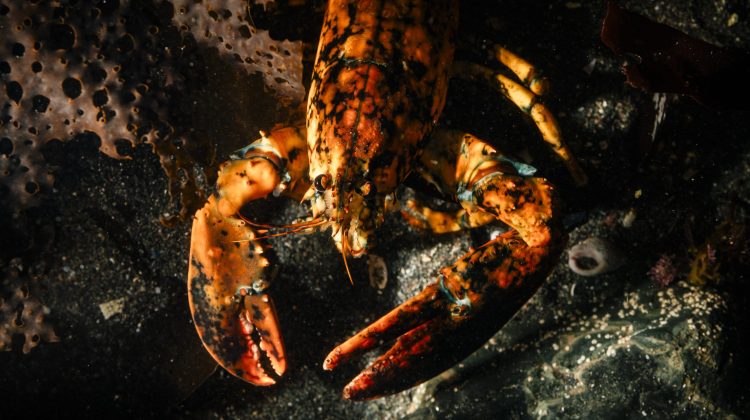NAHANT — Northeastern University’s Marine Science Center has just acquired an exciting new addition to its ranks: a calico-colored lobster named Jack O’Lantern, or Jackie for short.
Outreach Program Coordinator Sierra Muñoz talked about the background of how Jackie found her new home in Nahant.
“We were lucky enough to get the blue lobster, Neptune, earlier this fall, and that helped us connect with another local lobster fisherman, who was interested in seeing Neptune… Then, one day he sent me a message and a photo from his boat, where he showed me a photo of this beautiful young female lobster and asked if I’d be interested in adding her to our collection,” Muñoz said.
The fisherman who donated Jackie — Mike Tufts, a Nahant resident who fishes out of Gloucester — cited help from his shipmate, who he referred to as “Big Jim Perkins,” for his help in acquiring the new addition to the science center.
When asked about his reaction to seeing Jackie for the first time, Tufts noted in his 57 years of fishing that “we see lots of things.”
“I’ve caught blue ones, calico-colored ones in the past, and I’ve also caught lobsters that, genetically, blue or calico on one side and are totally different on the other side,” Tufts explained.
Muñoz added that, statistically speaking, calico lobsters are actually considered rarer than blue lobsters, due to the coloration, variety of pigmentation. She also explained that their bright colors makes them easier to spot for predators, decreasing the likelihood of seeing a calico-colored lobster grow to be an adult.
She said the reason for the odd coloration is due to astaxanthin: a compound that can result in the lobster appearing as a variety of colors. She elaborated, saying that some lobsters have a biological pigment that results in blue shading.
“A lot of animals like to eat these lobsters, and I can imagine that she would be easier to spot in the water, which I imagine contributes to the likelihood of these lobsters making it into adulthood — or being pulled up by one of the lobster traps — much lower,” she said.
While caring for different-colored lobsters and other species in the tanks at the science center, Muñoz confirmed that she has noticed some behavioral differences between Neptune, Jackie, and the others.
For example, when feeding time comes along, Muñoz notices that Jackie is “really eager to take food when I give it to her,” but not Neptune. He’ll stay somewhat shy and take it upon himself to crush some muscles open with his claw and eat them when nobody’s looking.
“It’s a really rewarding part of my role to be able to leverage different types of expertise (at the Science Center)… We have research expertise, practitioner expertise from the people who are out on the water and seeing these animals every day,” Muñoz said. “It’s really added a lot to my understanding — and what we can share to students and those who live in the community.”
Dr. Katie Lotterhos, who runs the Center for Marine Ecological Genomics, said that it was “so cool to get a calico lobster at the science center in time for Halloween.” She added that aside from being unique, it presented the opportunity to engage the public in the study of marine organisms.



